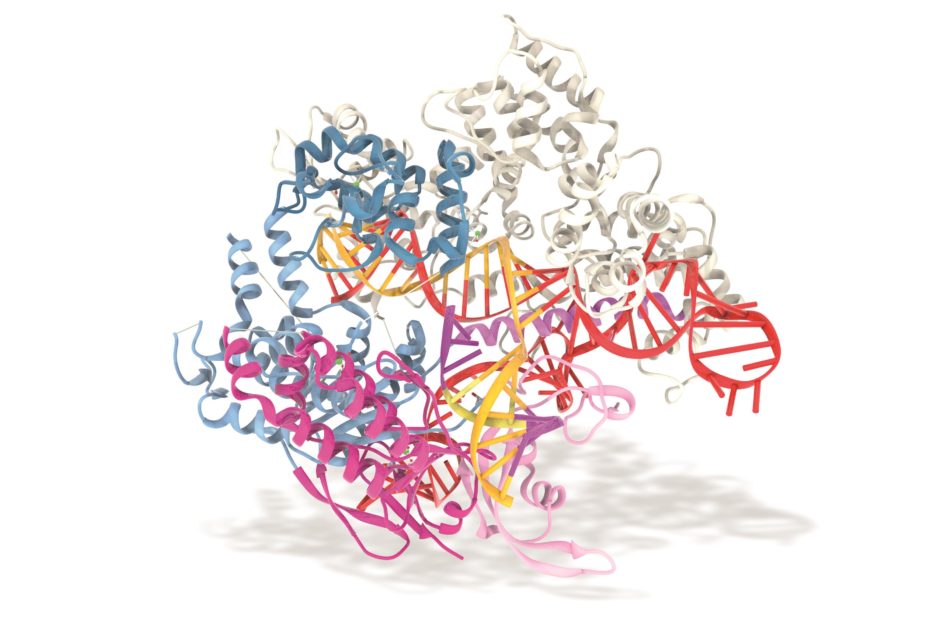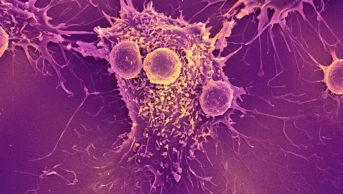
Ramon Andrade 3DCiencia / Science Photo Library
Duchenne muscular dystrophy is caused by mutations in the dystrophin gene, which results in muscle degeneration. Gene therapy has been proposed as a possible treatment, but the large size of the gene is a major challenge.
Now, researchers from Duke University, North Carolina, have successfully restored function of the mutated dystrophin gene in mice by packaging the CRISPR/Cas9 gene editing system into a virus and injecting it into the muscle or bloodstream.
This resulted in some expression of functional dystrophin protein in cardiac and skeletal muscle, alongside improvements in muscle biochemistry and force.
The research, published in Science (online, 31 December 2015)[1]
, represents the first time that the CRISPR/Cas9 system has been used to treat a genetic disease in an adult mammal with a delivery method that could be extended to human clinical trials.
References
[1] Nelson CE, Hakim CH, Ousterout DG, et al. In vivo genome editing improves muscle function in a mouse model of Duchenne muscular dystrophy. Science 2015; doi: 10.1126/science.aad5143.


